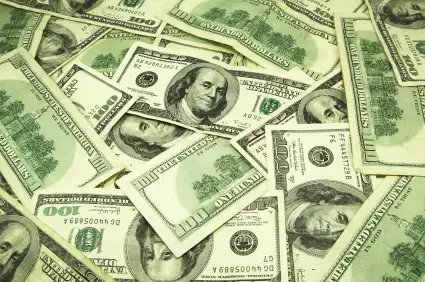
Ancillary airline fees amount to really big bucks. That’s the gist of a new report from Ideaworks, whose findings shouldn’t come as a big surprise to anybody. The data, compiled by Ideaworks and sponsored by Amadeus, shows that 50 large airlines collected $22.6 billion in ancillary revenues during their most recent 12-month financial reporting periods.
But contrary to some current headlines, “ancillary revenue” doesn’t mean just those annoying fees; airlines get a lot of revenue from other not-so-obvious sources.
Top ancillary revenue collectors:
- United (including Continental) raked in the largest single amount, at a bit over $5 billion, followed by Delta at about $2.5 billion and American at about $2 billion.
- Among foreign airlines, Qantas took in the most, at around $1.4 billion; among the European lines, low-fare but charge-for-almost-everything-else Ryanair and EasyJet each took in a bit over $1 billion.
- Although Southwest doesn’t charge for two checked bags, it collects a lot of other charges, adding up to more than $1 billion.
But the aggregate numbers don’t tell the whole story, and the whole story isn’t confined to fees. When the analysts looked at ancillary revenue as a portion of total revenues, fee-happy Spirit topped the list, at 33.2 percent, closely followed among U.S. airlines by Allegiant at 27 percent. All of the top 10 ancillary revenue generators worldwide, by percent of total revenue, are airlines the industry vaguely classifies as low fare or low cost (and all too often erroneously classifies as discount). In addition to lots of fees, however, these airlines also generate big revenues from bundled hotel, car, and tour arrangements. Obviously this strategy works: These carriers report among the highest profit margins in the industry.
In fact, travel-based fees probably do not provide the bulk of the giant airlines’ ancillary revenues. One way to show this is to look at fee revenue per passenger. Here, the list is more of a mixed bag:
- Qantas topped the list, at more than $50 a head, and Spirit was number two, at $42.
- But United, at $36, edged out Allegiant, at $34, for third spot among U.S. carriers.
Ideaworks doesn’t break out the total fee data by category, but it does note that the bulk of Qantas’ big take is due to the miles it sells to banks issuing credit cards. I have no doubt that revenues from sales of frequent-flyer credit to big banks also accounts for a big hunk—probably the majority—of the ancillary revenues taken in by United, Delta, and American. And I have no doubt that the majority of the smaller airlines’ fees are derived from sales of hotel accommodations, tours, and car rentals.
Even though travel-based fees probably aren’t the most important ancillary revenues for the giant airlines, they’re certainly important to individual travelers. The big question is no longer whether fees are here to stay; they are. Instead, the focus now is how airlines and online travel agencies should display these fees, and how consumers and corporate travel managers can best figure out how much a trip will really cost before they buy. For now, at least, I have no answer, other than the feeling that things will get worse before they get better—and they may not get better at all.
You Might Also Like:
We hand-pick everything we recommend and select items through testing and reviews. Some products are sent to us free of charge with no incentive to offer a favorable review. We offer our unbiased opinions and do not accept compensation to review products. All items are in stock and prices are accurate at the time of publication. If you buy something through our links, we may earn a commission.
Related
Top Fares From
Today's Top Travel Deals
Brought to you by ShermansTravel
Porto to Lisbon: 7-Nt, Small-Group Portugal...
Indus Travels
 vacation
$1899+
vacation
$1899+
Greenland: Luxe, All-Incl. 11-Nt Exploration Small-Ship...
Swan Hellenic



Ohio: Daily Car Rentals from Cincinnati
85OFF.com





